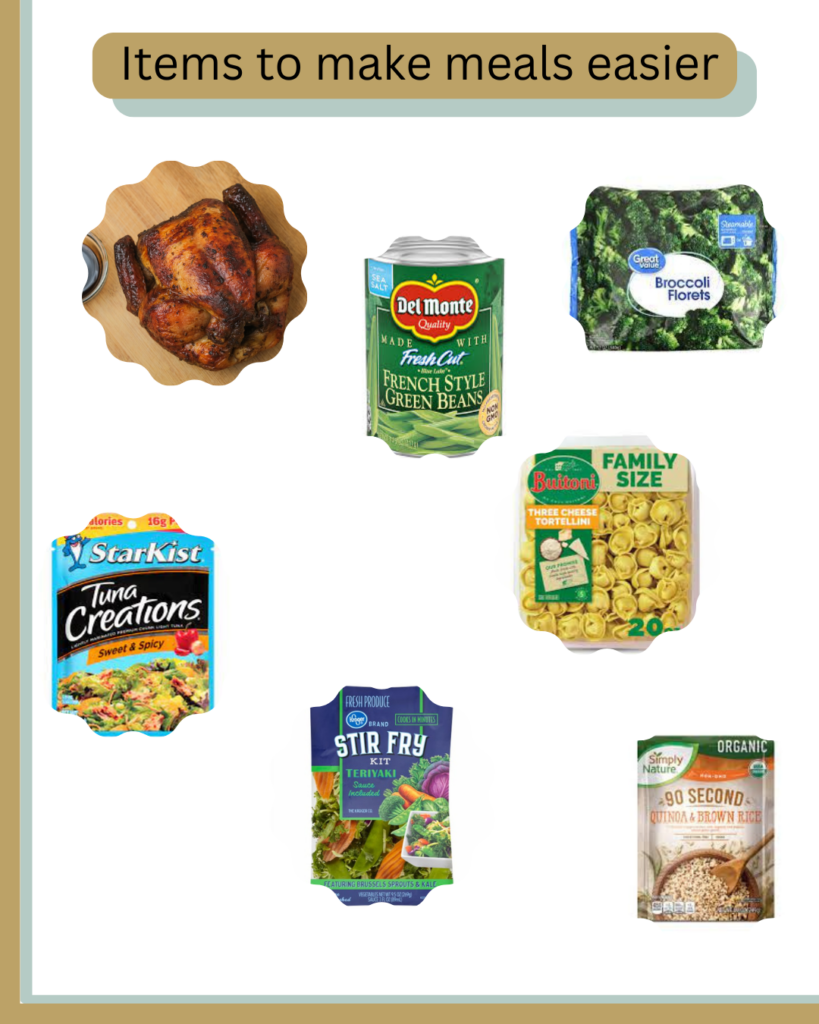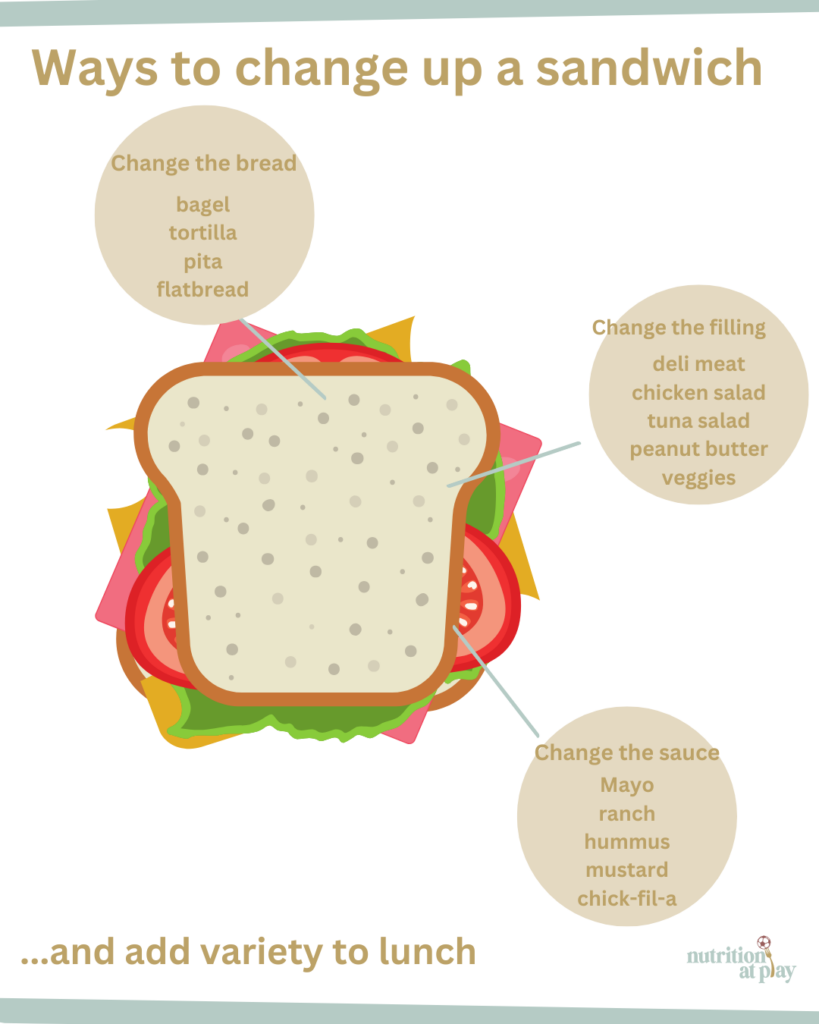Struggling to get your athlete to fuel at lunchtime?
As a parent, have you ever noticed that your athlete’s friends aren’t eating lunch? Many high school athletes tell me that peer pressure makes them uncomfortable about eating in front of others or they fear being the odd one out. It’s a tough balancing act—trying to fit in while also striving to excel in their sport and discover their identities.
As a sports dietitian, I see firsthand how critical it is for athletes to prioritize nutrition, and you, as a parent, play a pivotal role in this journey. Here’s how you can help your young athlete navigate lunchtime challenges and fuel their performance.
Create a Lunch Packing Plan
Start by collaborating with your athlete to develop a lunch packing strategy. Ask these important questions to gauge their needs and preferences:
- Does your school provide a microwave? If so, how long is the waiting time?
- Are you tired of sandwiches and craving more variety?
- Do you prefer hot meals, or are cold items perfectly acceptable?
- Will you be using a locker for your lunch, or do you need to carry it with you all day?
Every athlete is different in what they are going to want, and to be fair they may not actually know what they want, or some of them may not actually care. They may be indifferent about their food. But having these conversations you may find that your athlete is tired of eating lunch because they want more variety or are tired of eating the same thing.
Mastering Meal Preparation
Encourage your athlete to think ahead about packing their lunch. If they’re rushing out the door with just ten minutes to spare, it’s time to rethink the routine. Helping them prepare their meals the night before is a valuable life skill. After all, as adults, we still have to eat meals too and the planning doesn’t get easier!
Meal planning for their lunches doesn’t have to be an exhausting task, it can be something you talk through on the way home from school or while you’re running an errand.

Ideas to help with meal planning:
-start with jotting down some meal ideas they like, this can be on a post it, napkin or even in the notes section of your phone (or theirs to help them with taking some responsibility)
-When you’re coming up with ideas, try to add some easy diversity into those, like if they say sandwiches, can we come up with creative ways to make it so we don’t get sick of a sandwich. Swap out the bread for a bagel or wrap. Instead of always doing the same condiment, can we do ranch or Chick-fil-A sauce instead of just mayo? Or even change the filling?
-figuring out food preferences: some athletes really enjoy having more hot meals that are more filling. This may be as simple as making larger quantities at dinner for them to take as leftovers. If you’re now thinking, great idea Katie… they don’t have access to a microwave, don’t stress, thermoses are great options for transporting food and keeps it warm for longer.
It’s also not just planning that is valuable, creating the plan also means communicating at the proper time to make it happen. So starting the conversation with enough time to give them time to think before you go grocery shopping or put that click list order in. Letting your athlete know hey, Friday evening I need to know what are some meals you want to take for lunch next week. So pull out your list and see if anything sounds good. You may at this point even want to tell them what you are planning to make for dinner to see if they want to take any of that as leftovers.

The Importance of Eating Lunch
While packing a nutritious lunch is crucial, getting your athlete to eat it is another challenge—especially when their friends aren’t. This is where open communication is key. Discuss why fueling their bodies at lunch is essential, regardless of what their friends do.
High schoolers are still growing—new muscles, bones, hair, nails, and skin all require energy and nutrients to develop. Skipping meals can hinder this growth; muscles won’t thrive without proper fuel, and energy levels will plummet. Without the necessary sustenance, maintaining a balanced mood and energy to engage in sports and socialize becomes increasingly difficult. As a parent you may be thinking, uh duh, Katie I know my kid is growing. I have bought them new pants 3x now this year… they still just don’t get it.
Eating lunch for teens is more than just eating
For most teens anything that is going to make them feel like they are standing out is hard to convince them that they need to do. If their friends aren’t eating they may feel embarrassed or that they are going to get made fun of for eating.
So how do we handle this situation? First, it may be helpful to actually start with encouraging them to have a bigger breakfast. This will actually give enough sustenance in it to keep them focused for the 3-4 hours they need. This is going to help with having more regular hunger cues happen.
Secondly, I would suggest, reminding them that they aren’t their friends, they don’t know what they ate for breakfast or dinner, or what they snack on during the day. That we each have our own needs that need to be met. That fueling their performance is what we are worried about. That our goal is to make sure they have enough fuel on board. That we are working to decrease the risk of them getting an injury, because NO ONE wants to lose out on a season because of a stress fracture. There’s even research to back that up, it’s 25% higher risk of stress fractures in athletes that are under fueling.
Conclusion
In conclusion, helping your athlete navigate the complexities of lunchtime nutrition involves planning, communication, and encouragement. By working together, you can ensure they are equipped to make healthy choices that support their athletic endeavors and overall well-being. Remember, you’re not only preparing them for current challenges but also instilling lifelong skills in nutrition and self-care!
Looking for more? I would love to work with you or your athlete to accomplish these goals, this is a lot and to be honest, it’s a lot of problem solving with a lot of change happening day to day. If you’re looking for more I would love to set up a time to chat CLICK HERE! or join my Email Squad to grab your FREE digital download of pre-workout snacking and receive monthly email tidbits on fueling Join the Squad
Fuel UP
Katie!